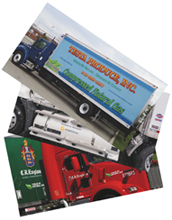Much closer following distances are possible, along with increased fuel savings, and the equipment will bring greater safety to the road. “The calculations show [the trucks] can get down to almost 20 feet (in following distance),” says Mike Roeth, executive director of NACFE, who believes collision avoidance technology is truly ready to be employed in this type of transporting interaction.
“The closer the tractor-trailers are to one another, the higher the benefit, and they are extremely safe operating this way. With platooning, the concept is to take readily available safety equipment and use it to link the trucks together, and benefit from the drafting and improved aero-dynamics,” adds Roeth.
“When you bring the trucks closer together at following distances under 100 feet, you begin to get fuel efficiency into the double digits for both trucks,” notes Peloton Technology’s Boyd, “because the rear truck is drafting off the front, and the front truck benefits from the rear truck smoothing out the vortex at the back of the truck, which creates a suction holding the truck back.”
Further, Boyd asserts, fleets using platooning technology will be “safer and have lower fuel costs. They will have less of a problem with fuel price spikes, and be better providers for shippers to use.”
Expenses & Payback
The expense for platooning is relatively small—about $2,000, Boyd reports—and the savings is split initially between the fleets and the technology company. Even so, payback is expected within a year, and possibly in three to four months.
Despite the relatively low cost, fleets have not deployed the technology because they do not see the benefit from the safety improvements alone, which do not seem to warrant full commitment. Yet the savings of $5,000 to $7,000 in fuel per year, per truck from platooning, Roeth believes, should change such a viewpoint.
One rough spot to work out is a concern about tailgating laws, but the industry is working with authorities to enable the platooning practice. “They have to change some of the laws on the books to allow this to happen,” notes Tim Jennings, a development specialist at the Auto Research Center.
Although the system is still in an early test phase—C.R. England has been a major participant—Boyd says the company is “working now on plans to move into fleet pilot activity later this year.” By next year, 2015, he believes deployment of active systems will begin.



